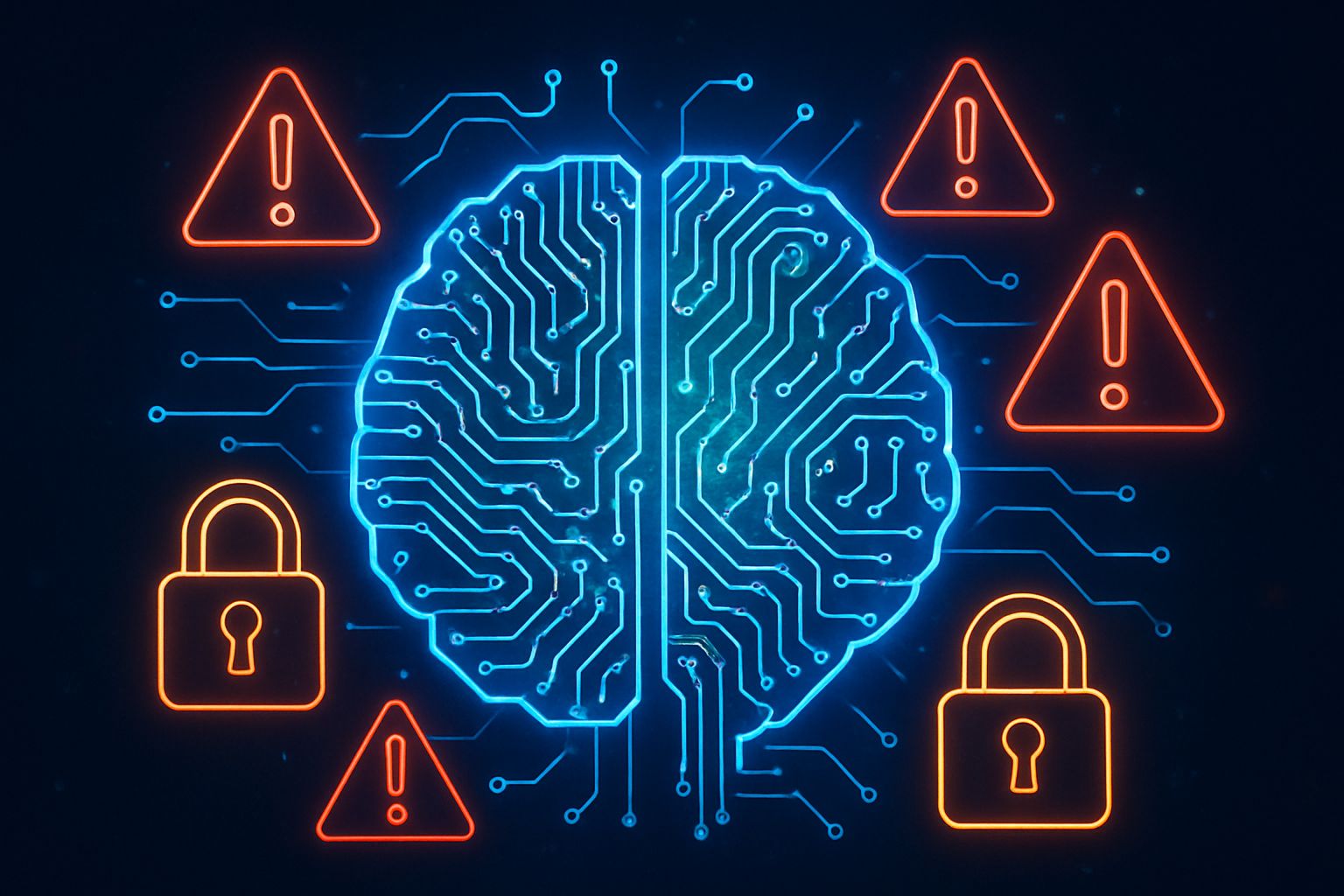
AI CERTS
23 hours ago
Cybersecurity Risks of AI-Powered Penetration Testing Tools
This article examines those dangers, emerging guidance, and practical paths forward. Throughout, we ground observations in verified research and market data. Readers will leave with clear actions for safe adoption and future skills. Moreover, we spotlight how Offensive AI reshapes attacker economics. Meanwhile, vendors promise stronger Signal amid expanding Noise. Sound Cybersecurity strategy now requires equal attention to people, process, and models.
Market Growth Outlook 2025
Global penetration-testing spend reached about USD 2.5 billion in 2024, according to Fortune Business Insights. Furthermore, analysts expect a 12-16% compound growth rate over the next five years. Generative automation is a key growth driver. Gartner forecasts more than 15% incremental application security spend driven by generative technology through 2025. Therefore, boards increasingly classify AI pentest Tools as strategic investments. However, budget expansion comes with accountability for new failure modes.

- Fortune report: USD 2.45B market size, mid-teens CAGR.
- Gartner: 15% extra security spend driven by generative AI.
- Underground forums: 219% rise in dark AI tool mentions during 2024.
Collectively, these figures show escalating investment alongside rising expectations. Consequently, decision-makers must examine risk factors before scaling deployments. These financial trends confirm market acceleration. Nevertheless, technical exposure grows faster than budgets. Cybersecurity budgets reflect this upward curve.
Offensive AI Attack Surfaces
Offensive AI introduces distinct technical weaknesses beyond traditional software flaws. Prompt injection remains the headline threat. Ben-Gurion researchers demonstrated universal jailbreaks that override guardrails across popular models. Moreover, dark language models sell jailbreak services tailored for automated pentesting. Model and data poisoning further complicate supply-chain assurance. Consequently, an agent can inherit hidden backdoors that trigger under specific prompts. Uncontrolled self-modifying Tools amplify damage potential because generated payloads may contain exploitable vulnerabilities. In contrast, human testers usually notice unsafe payload side effects. Regulators now demand transparent Threat Evaluation, Verification, and Validation programs for such agents. Cybersecurity teams therefore must treat every model component as untrusted until proven safe. These attack surfaces stem directly from model logic. Subsequently, accuracy challenges become the next critical hurdle.
Accuracy And Hallucination Risks
LLMs sometimes invent vulnerabilities or misgrade severity, creating distracting Noise. Veracode found 45% of AI-generated code failed standard security checks. Furthermore, hallucinated exploits waste triage cycles and erode analyst trust. False negatives also slip past defences, diminishing true Signal. Therefore, continuous human validation remains mandatory. Vendors market near-zero false positives; nevertheless, independent tests rarely confirm those claims. Tools that execute unverified exploits can crash production or leak data. Meanwhile, defenders struggle to reproduce AI decisions without transparent logs. Cybersecurity governance frameworks now rank explainability beside accuracy. Accuracy problems create hidden operational costs. However, sound governance can narrow the gap. That governance begins with clear legal boundaries.
Legal And Compliance Gaps
Automated scanning crosses jurisdictions in milliseconds. Consequently, mis-scoped engagements risk breaching the Computer Fraud and Abuse Act. European privacy law also penalises unintended data extraction. In contrast, many agentic platforms lack per-action approval workflows. Therefore, lawyers insist on explicit scopes, evidence logs, and insurer notification. CISA guidance further urges human-in-the-loop control for high-impact actions. Cybersecurity insurers increasingly ask for evidence of TEVV red-team results during underwriting. Vendors that cannot provide model SBOMs face procurement delays. Nevertheless, buyers can demand a structured assurance checklist. Legal clarity reduces unexpected liabilities. Subsequently, attention turns to practical mitigations.
Key Mitigation Best Practices
Several Cybersecurity mitigations address both technical and governance threats. Firstly, restrict agent permissions using role-based access controls. Secondly, gate dangerous actions behind explicit human confirmation. Moreover, treat every model output as untrusted input and sanitize accordingly. Maintain isolated logging with encryption and secret redaction to protect sensitive prompts. TEVV red-teaming should run before and after each major model update. Additionally, verify model provenance and hash signatures to detect poisoning. Vendor questionnaires must cover guardrail testing, telemetry retention, and incident response. Offensive AI capabilities should undergo independent audits equal to other critical security functions.
- Limit agency and sandbox execution.
- Enforce human review for destructive commands.
- Apply OWASP GenAI Top-10 guidance.
These steps convert chaotic experimentation into managed risk. Consequently, teams can concentrate on real threats instead of alert fatigue. Next, we explore that balance in depth.
Balancing Signal Versus Noise
Security teams drown in vulnerability feeds that lack context. AI promises prioritization by chaining findings into attack paths. However, poor model calibration generates extra Noise that obscures urgent issues. Effective programs measure precision, recall, and mean time to validate the produced Signal. Subsequently, dashboards should display confidence scores alongside raw findings. User feedback loops retrain models, enhancing Signal and suppressing spurious Noise. Tools with explainable reasoning help analysts accept or discard recommendations quickly. Cybersecurity outcomes improve when response teams receive fewer, clearer alerts. Prioritisation quality defines return on investment. Meanwhile, skill gaps influence that quality significantly. Upskilling is therefore our next focus.
Future Skills And Pathways
Adopting agentic testing demands new hybrid competencies. Engineers need prompt engineering, attack-path analysis, and governance literacy. Moreover, cloud exposure knowledge remains critical because most modern attack surfaces sit there. Professionals may validate expertise through the AI Cloud Security™ certification. Offensive AI courseware also sharpens understanding of automated attacker tactics. Additionally, audit teams should study model evaluation metrics and legal frameworks. Cybersecurity managers therefore must integrate AI literacy into annual training budgets. Upskilled staff catch subtle model failures faster. Consequently, organisational resilience grows alongside technological adoption. Finally, we consolidate these insights.
AI-powered penetration testing is progressing from pilot projects to production deployments. However, scale and speed arrive with model-specific failure modes. False findings, jailbreaks, poisoning, and legal uncertainty top the watchlist. Consequently, Cybersecurity programs must pair automation with strict governance, TEVV, and human oversight. Offensive AI may expand threat capabilities, yet defensive innovation can outpace abuse when guided carefully. Moreover, disciplined metrics help separate actionable Signal from distracting Noise. Teams should benchmark vendors, demand evidence, and continue professional development. Therefore, start by reviewing mitigation checklists and enrolling in advanced cloud security courses today. Your next penetration test could be autonomous—ensure it remains under your control.



